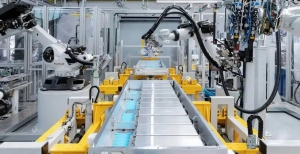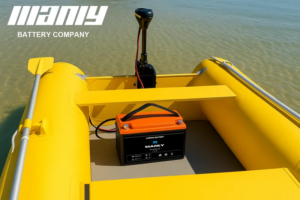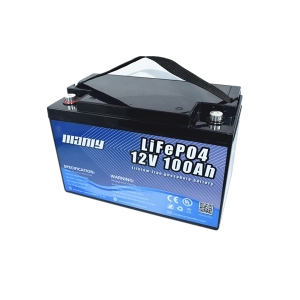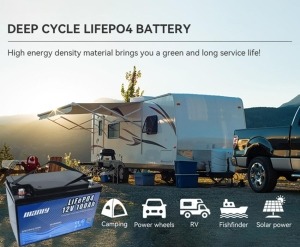Tutte le sedie a rotelle elettriche hanno batterie al litio?
Sommario
- Tutte le sedie a rotelle elettriche hanno batterie al litio?
- Tipi di batterie utilizzate nelle sedie a rotelle elettriche
- Vantaggi delle batterie al litio per sedie a rotelle
- Sfide con le batterie al litio per sedie a rotelle
- Strategie efficaci di manutenzione e sostituzione per le batterie delle sedie a rotelle
- Il futuro della tecnologia delle batterie per sedie a rotelle: tendenze e innovazioni
- Conclusione
- Ulteriori informazioni sulla batteria
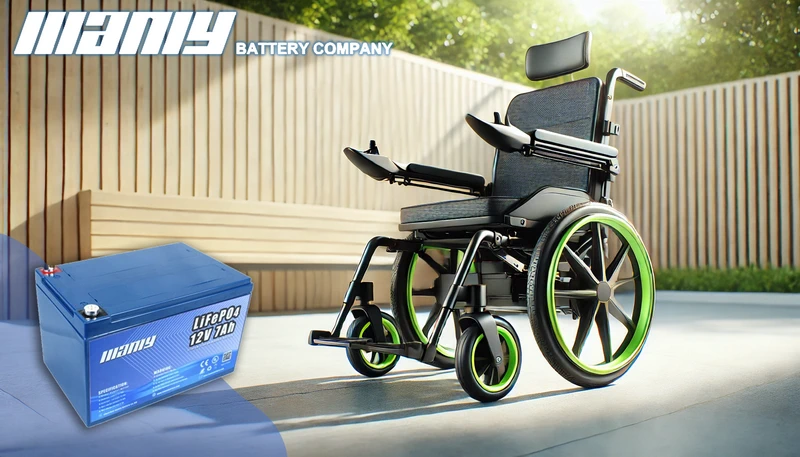
Tipi di batterie utilizzate nelle sedie a rotelle elettriche
When selecting an electric wheelchair, one of the most crucial components to consider is the battery type. The battery not only determines how far the wheelchair can travel on a single charge but also impacts the overall weight, maintenance, and usability of the wheelchair. In this section, we'll explore the different types of batteries commonly used in electric wheelchairs: 12v wheelchair battery, Gel, AGM, and lithium wheelchair batteries.Batteria per sedia a rotelle da 12 V
The Batteria per sedia a rotelle da 12 Vè un punto fermo in molti progetti di sedie a rotelle elettriche. Questo tipo di batteria è apprezzato per la sua affidabilità e prestazioni costanti. In genere, due batterie da 12 volt sono collegate in serie per fornire un sistema da 24 volt, essenziale per i requisiti di alimentazione della maggior parte delle sedie a rotelle. Queste batterie sono spesso del tipo al piombo, note per la loro durata ed efficienza in termini di costi.Batterie al gel
Gel batteries are a type of sealed lead-acid battery, but with a twist: they use a gelified electrolyte. This gel composition helps prevent leaks and is less prone to damage if the battery casing is compromised. Gel batteries are also more stable, can handle lower temperatures, and are less likely to sulfate compared to their standard lead-acid counterparts. For wheelchair users, this means less maintenance and a reduced risk of unexpected power loss.Batterie AGM (Absorbed Glass Mat).
AGM batteries represent a subgroup of lead-acid batteries where the electrolyte is absorbed into a fiberglass mat. This design makes the batteries spill-proof and provides superior performance in terms of power output and charge cycles. AGM batteries are more efficient at charging and discharging than traditional lead-acid batteries, making them a preferred choice for users who need a reliable power source that can handle frequent charging cycles without deteriorating too quickly.Batterie al litio per sedie a rotelle
Lithium wheelchair batteries are becoming increasingly popular due to their lightweight and high efficiency. These batteries can charge faster and last longer than lead-acid batteries, providing more range and a lighter weight, which makes the wheelchair easier to transport and maneuver. Moreover, lithium batteries do not require the same level of maintenance as lead-acid batteries, such as regular watering. However, they are usually more expensive upfront and may require special care when charging to ensure longevity.Specifiche tecniche
Each battery type comes with its own set of specifications. 12v wheelchair batteries typically provide a solid balance of performance and affordability but may be heavier and require more frequent replacement. Gel and AGM batteries offer better performance in terms of longevity and maintenance, with AGM usually being the more robust option in cold weather. Lithium wheelchair batteries, while the most expensive, offer the highest energy density, resulting in lighter weight and longer life spans, making them a worthwhile investment for active users.In summary, the choice of battery in an electric wheelchair impacts not only the wheelchair's performance but also its operational costs and user experience. Whether you opt for the economical 12v wheelchair battery, the durable Gel or AGM, or the high-performing lithium wheelchair batteries, understanding these options will help you make an informed decision tailored to your specific needs.Vantaggi delle batterie al litio per sedie a rotelle
Lithium batteries are revolutionizing the mobility industry, particularly in the realm of electric wheelchairs. Known for their efficiency and longevity, lithium wheelchair batteries offer significant advantages over traditional battery technologies like lead-acid. This chapter explores why these batteries are becoming the preferred choice for those seeking dependable, lightweight, and environmentally friendly options in electric wheelchairs.Longevità e affidabilità
One of the standout benefits of lithium wheelchair batteries is their longevity. Unlike traditional batteries, which may require frequent replacements, lithium batteries can last significantly longer. They have a higher number of charge cycles, often up to 1000-2000 full charge cycles before their capacity begins to degrade. This means that a lithium battery could potentially last for several years without needing a replacement, making it a cost-effective solution in the long run.Additionally, lithium batteries maintain their charge efficiency better than their counterparts. They can discharge up to 80-90% of their capacity without significant loss in power output, ensuring that the wheelchair operates at a high performance for longer periods. This reliability is crucial for users who depend on their electric wheelchairs for daily mobility.Vantaggi in termini di peso
The weight of the battery is a critical factor in the design and functionality of electric wheelchairs. Lithium wheelchair batteries are up to 30% lighter than traditional lead-acid batteries. This reduction in weight contributes to a lighter wheelchair, which is easier to maneuver and transport. For users, this means enhanced mobility and less physical strain, particularly when loading and unloading the wheelchair from vehicles or navigating through tight spaces.Impatto ambientale
Environmental sustainability is increasingly becoming a priority, and lithium batteries score well on this front too. They are more environmentally friendly than lead-acid batteries because they contain no hazardous lead and have a lower risk of acid leaks. Moreover, the longer lifespan of lithium batteries reduces the frequency of battery replacements and the associated environmental burden of waste and recycling.Preferenza crescente nel settore della mobilità
The shift towards lithium technology in the mobility sector is driven not only by the benefits mentioned above but also by broader technological advancements and regulatory factors. Innovations in lithium battery technology have led to safer, more efficient batteries that meet the rigorous demands of electric wheelchair users. Regulatory pushes for greener technologies also play a role, as lithium batteries align better with environmental guidelines compared to lead-acid batteries.In conclusion, lithium wheelchair batteries represent a superior choice for modern electric wheelchairs, driven by their long life, lightweight characteristics, and minimal environmental impact. As technology continues to advance, we can expect these batteries to play an even greater role in enhancing the independence and quality of life for individuals relying on electric mobility aids. The ongoing development and adoption of lithium batteries are set to transform the electric wheelchair market, making it more accessible, sustainable, and user-friendly.Sfide con le batterie al litio per sedie a rotelle
While batterie per sedie a rotelle al litiooffrono numerosi vantaggi, ma comportano anche una serie di sfide che possono influire sulla scelta e sulla soddisfazione dell'utente. Questo capitolo approfondisce i limiti e le complicazioni associati a queste batterie, esplorando aspetti come costi, compatibilità e scenari in cui tipi di batterie alternativi potrebbero essere più adatti.Preoccupazioni sui costi
One of the primary deterrents for many users considering batterie per sedie a rotelle al litio is the initial cost. Lithium batteries are generally more expensive than their lead-acid or gel counterparts. This higher upfront cost can be prohibitive for individuals or healthcare facilities with limited budgets. Although the long-term benefits, such as fewer replacements and lower maintenance, can offset the initial expense, the initial investment remains a significant barrier for widespread adoption.Moreover, the maintenance and replacement of lithium batteries, though less frequent, can also be more costly. Specialized equipment and knowledge are required to safely handle and dispose of lithium batteries, adding to the overall cost of ownership.Problemi di compatibilità
Compatibility is another significant challenge with the adoption of lithium batteries in electric wheelchairs. Many existing wheelchair models are designed to operate optimally with traditional battery types, such as lead-acid. Retrofitting these models to accommodate batterie al litio can require extensive modifications, not just in the battery housing but also in the electronic control systems to handle different voltages and currents. This can complicate the transition to lithium technology, particularly for users who are not ready to purchase new wheelchairs but are looking to upgrade their existing battery systems.Idoneità in determinati scenari
While lithium batteries excel in many use-cases due to their lightweight and high-energy density, there are scenarios where other types of batteries might be more suitable. For example, in extremely cold environments, lithium batteries can underperform as low temperatures can affect their chemical reactions, leading to reduced power output and efficiency. In such cases, gel or AGM (Absorbent Glass Mat) batteries, which are less susceptible to cold temperatures, might be a better choice.In addition, for users who require only minimal use of their electric wheelchair or for those who prioritize certain performance characteristics such as extreme durability under rough conditions, the cost-benefit ratio of lithium may not be as favorable. Here, the more robust nature of traditional batteries could be deemed more appropriate despite their heavier weight and lower efficiency.Strategie efficaci di manutenzione e sostituzione per le batterie delle sedie a rotelle
Maintaining and replacing the batteries of an electric wheelchair are crucial for ensuring optimal performance and longevity of your mobility aid. This chapter provides practical advice and tips on how to care for and when to replace the batteries in your electric wheelchair, focusing on maximizing their lifespan and ensuring continuous, reliable mobility.Manutenzione di diversi tipi di batterie per sedie a rotelle
The maintenance needs of wheelchair batteries can vary significantly depending on the type of battery used. Gel batteries, AGM batteries, and lithium wheelchair batteries all have different care requirements:- Batterie al gel require very little maintenance as they are sealed and do not need watering. However, it's crucial to keep them charged and avoid completely depleting the battery charge, as this can significantly shorten their lifespan.
- Batterie AGM (Absorbent Glass Mat). also do not need additional water and are more resistant to vibrations than gel batteries. They should be kept fully charged and stored in a cool, dry place when not in use to prevent sulfation, which can degrade the battery's capacity.
- Batterie per sedia a rotelle al litio are the most maintenance-friendly among all types, with a high energy density and no memory effect, meaning they don’t require complete discharge before recharging. Nevertheless, it's important to use a compatible charger and avoid exposing them to extreme temperatures, as heat can cause lithium batteries to degrade faster.
Scelta e sostituzione delle batterie della sedia a rotelle
When it comes time to replace your wheelchair’s battery, several factors should be considered to choose the right battery:- Compatibilità della batteria: Ensure that the replacement battery is compatible with your wheelchair model. Voltage and capacity should match the manufacturer's specifications to avoid any issues with performance or damage to the wheelchair's motor or electronics.
- Marchio e qualità: Scegli batterie di alta qualità di produttori rinomati. Le alternative più economiche possono far risparmiare denaro in anticipo ma in genere offrono una durata di vita più breve e prestazioni meno affidabili, portando a sostituzioni più frequenti.
- Tipo di batteria: Valuta la tipologia di batteria più adatta alle tue esigenze. Le batterie al litio, sebbene più costose, garantiscono una maggiore durata e richiedono ricariche meno frequenti. Se i vincoli di budget rappresentano un problema, le batterie al gel o AGM possono essere buone alternative.
- Garanzia e supporto: Verificare la garanzia offerta con la batteria. Un periodo di garanzia più lungo è spesso indicatore di una batteria di migliore qualità. Inoltre, l'acquisto da un fornitore che offre un buon supporto clienti può essere utile in caso di problemi durante la vita della batteria.
- Spegnere la sedia a rotelle e rimuovere i collegamenti della batteria.
- Rimuovere in sicurezza la vecchia batteria e smaltirla secondo le normative locali, poiché le batterie contengono materiali che possono essere dannosi per l'ambiente.
- Installare la nuova batteria, assicurandosi che tutti i collegamenti siano sicuri e corretti.
Il futuro della tecnologia delle batterie per sedie a rotelle: tendenze e innovazioni
As we move forward, the field of battery technology continues to evolve, offering new possibilities and improvements for electric wheelchair users. This chapter explores the significant technological advancements in the battery sector and anticipates future trends that may redefine mobility for individuals relying on electric wheelchairs.Progressi tecnologici nella tecnologia delle batterie
In recent years, lithium wheelchair batteries have made a notable impact due to their efficiency and longevity. Unlike traditional 12v wheelchair battery systems or other chemistries like Gel and AGM, lithium batteries offer a superior energy-to-weight ratio, which is crucial for mobility applications. They charge faster, last longer, and require less frequent replacement, making them a highly beneficial investment for wheelchair users.Beyond lithium, researchers are exploring other innovative battery technologies. Solid-state batteries, for instance, promise even greater safety and energy density. These batteries replace the liquid or gel electrolytes with a solid counterpart that is less prone to leaking and can withstand higher temperatures without degrading. Such advancements could further improve the safety and performance of wheelchair batteries.Prevedere le tendenze future delle batterie per sedie a rotelle
Looking ahead, the future of wheelchair batteries is likely to be shaped by several key factors:- Sostenibilità: Con l’aumento dell’enfasi globale sull’impatto ambientale, c’è una spinta verso tecnologie delle batterie più sostenibili. Innovazioni come i programmi di riciclaggio delle batterie e lo sviluppo di componenti biodegradabili delle batterie stanno guadagnando terreno. Questi sforzi mirano non solo a ridurre l’impronta ecologica, ma anche a rafforzare l’economia circolare nel settore delle batterie.
- Integrazione con le energie rinnovabili: Con l’aumento delle fonti di energia rinnovabile, le future sedie a rotelle elettriche potrebbero incorporare pannelli solari o altre tecnologie di raccolta dell’energia per prolungare la durata della batteria e ridurre la dipendenza dai metodi di ricarica tradizionali. Questa integrazione potrebbe essere particolarmente vantaggiosa nel migliorare l’autonomia degli utenti su sedia a rotelle, consentendo una maggiore mobilità senza la frequente necessità di ricarica.
- Sistemi di gestione intelligente della batteria (BMS): I progressi nell'elettronica e nel software hanno portato allo sviluppo di BMS più intelligenti che ottimizzano la durata e le prestazioni della batteria. Le future sedie a rotelle potrebbero utilizzare BMS in grado di prevedere lo stato della batteria e le esigenze di manutenzione, regolare il consumo di energia in base ai modelli di viaggio e migliorare l’efficienza complessiva della batteria.
- Personalizzazione e design specifico per l'utente: Man mano che la tecnologia diventa più adattabile, i futuri sistemi di batterie potrebbero offrire maggiori opzioni di personalizzazione. Le batterie potrebbero essere progettate per soddisfare le esigenze specifiche dei singoli utenti, considerando fattori come l’uso quotidiano tipico, i requisiti di peso e persino le condizioni climatiche.
Conclusione
As we have seen, the choice of battery not only affects the performance and efficiency of electric wheelchairs but also influences the user's independence and quality of life. The ongoing advancements in battery technology, particularly the shift towards more sustainable and high-performing options like lithium wheelchair batteries, promise to further enhance these devices. With innovations such as smart battery management systems and integration with renewable energy sources on the horizon, the future of wheelchair batteries looks bright. Users can look forward to wheelchairs that are more powerful, durable, and environmentally friendly, transforming mobility and accessibility for many.

